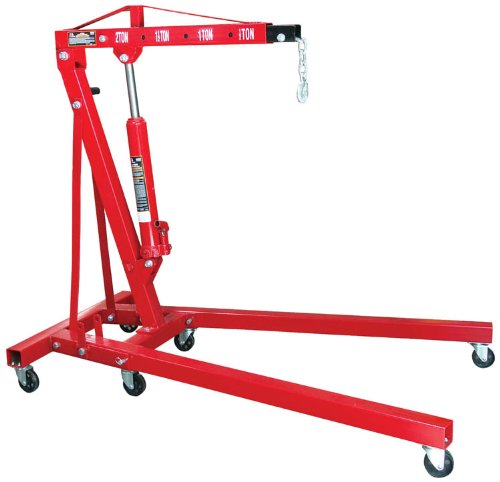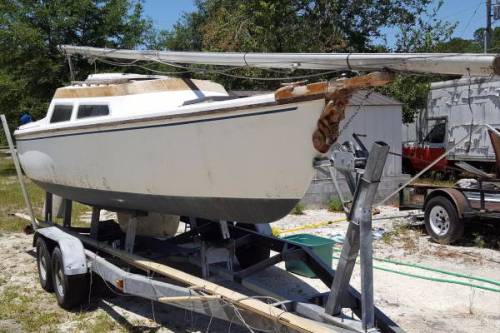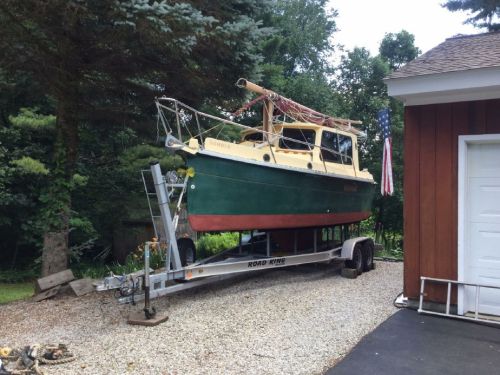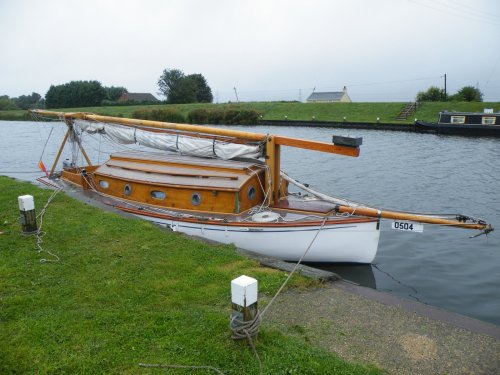I’m a sailor deep down in my soul. Growing up on Cape Cod we had three boats in my family. The one that got me hooked on the water wasn’t a sailboat, though. It was an 8-foot pram my dad built in the basement of our house in Watertown, Mass., one winter and that we took down to Nickerson State Park in Brewster where we spent the entire summer. To go anywhere with it I either had to row it or use the little, cantankerous 2hp Sears and Roebuck engine. Later, when we had moved to a house in Orleans we had two sailboats: an O’Day Daysailer and an O’Day Sunfish type board boat. Those are what I learned to sail on.
When I turned 30 I left the corporate world. I had been a newspaper reporter, a magazine editor, an advertising copywriter and a hospital public relations hack. I also wrote a couple of dozen free-lance magazine articles for national, but little known magazines like Rx Sports and Travel. I got a job as a deckhand on a dinner cruise boat in Ft, Lauderdale, following my muse, as it were. For the next 25 years I worked on a variety of boats both yachts and commercial craft. I ran a 300-passenger sight-seeing boat in Chicago in ’75 and ’76….
I worked almost exclusively on power boats including a short stint as mate on a tug boat in the Mississippi River delivering fuel and oil to ships and tugs from New Orleans to Baton Rouge. The only sailboat interludes were helping a young couple bring their 51-foot sailboat from Chicago to Ft. Lauderdale via the Illinois and Mississippi Rivers, crewing on a 65-foot ketch in the first two Ft, Lauderdale to Key West races and then a three and a half year gig as captain of an 85-foot, custom built sailboat over on the French Riviera and bringing it back to the U.S. in ’91.
Then I bought my beloved and much missed Nancy Dawson and made a 9-month single-handed trip from Ft. Lauderdale to Mexico, Belize and the Rio Dulce in Guatemala and lived on her for nearly 6 years….
As readers of this blog know, I’m going to be repatriating to the States soon because of health problems, and while the quality of health care is probably equal to the States, here it’s on a pay-up-front basis if you have to get hospitalized. It’s impossible for a 74-year-old guy with COPD and three stents in his arteries to get health insurance here. But one of the smart things I did when I moved to Panama was to continue paying my Medicare premiums just in case I had to go back. (One of the few smart decisions in my life.)
The only way that I can survive living in the States is to avoid renting an apartment somewhere and paying utilities, etc. since I’m depending on my SS to keep me alive. Here in Panama the most I’ve paid in rent was for an entire, fully-furnished small house WITH air conditioning and with paying a neighbor to maintain the yard I paid $205/month. Electricity was negligible. The highest bill I ever had here in Panama was just $30 and change. In the States my half of the 2/2 duplex was $600/month and electricity was ALWAYS $125 or MORE each month!
The only way I can survive in the States is if I buy a small boat and live “on the hook” as they say and avoid paying dockage as much as possible. I’ve had several conversations with my friend, Stef, in Lauderdale. He’s as knowledgeable about boats as anyone I know. We both have years of boat repair and restoration work under our belts. Probably an aggregate of three-quarters of a century between us. He said he’d be on the lookout for a sailboat in the size range I want, 23-25 feet, and, naturally, I’m looking, too.
Well, today I was looking on Craig’s List to see what’s available in the way of small outboard engines that would be available if the boat we liked didn’t come equipped with an engine. Of course, I’m thinking of sailboats, and one thing they do is move with the wind and use the engines when there’s none. Since I’d be using the boat almost exclusively on inland waters, rivers and the Intracoastal waterways, the sails would only be used occasionally when the wind was just right and most of the time I’d be under power.
So, as I’m running through the listings I came across THIS boat. A 26-foot Wellcraft.
That’s right! It’s NOT a sailboat, but they’re only asking $2k for the 26-footer, and they claim the engine runs fine. ¿Quién sabe? But I think it’s worth looking at. Why?
Well, for one thing a 26-foot power boat has more living space than a 26-foot sailboat. How come, you might ask? Because the power boat carries its beam almost all the way from the transom to the bow while a sailboat’s transom is narrower than the beam amidships and from there forward it pinches down rapidly to a sharp point. In other words, in an equal length a powerboat has more VOLUME than a sailboat and volume translates into living space. Let me illustrate using these two boats. The sailboat is a Columbia 26. A fine boat that anyone would be proud to own. You can see that the broadest part of the beam is amidships tapering both bow and stern. The powerboat is a Down East 25 and you can see IT has more livable space than the sailboat….
In his later years my dad had several power boats. One was a 26-foot Stamas. It looked like this, if memory serves….
He didn’t live on it full-time, but when my mom died in ’76 he took their two miniature poodles and disappeared for six months. No one knew what had happened to him. Turns out he left Venice, Florida, cut across the state on the Okeechobee Waterway, hung a left and went up into the St. John’s river to do his mourning.
I also saw another power boat, a 25-foot Tiara with an asking price of only $1,800. It’s rougher than the Wellcraft and it doesn’t have a motor. It could probably be picked up for around a grand but certainly not more than $1,200. So, what would I do for an engine? Pick up a big outboard which is what it probably had on it a long time ago judging from THIS. A bracket….
There are some other advantages to having a powerboat, especially if it has an engine with an alternator. That will keep the batteries topped off better than just a solar array which I intend to have on any boat I own.
These boats have a lot going for them in terms of livability, but while I’m a sailor at heart I need to keep my options open.
One good thing about these small power boats is that they need very little water to float in, unlike my Nancy Dawson that needed a minimum of five feet to stay afloat. These you can run the bow right up onto the beach and step off onto dry land or, at worst, ankle deep water. I STILL want to cover all of the waterways mentioned in previous posts so I’ll still be anchoring most of the time, coming into marinas to fuel up, buy groceries and wash clothes. But if I’d want to hole up at a marina somewhere for the winter I’ve found a few good places. There’s one in Steinhatchee, Florida up where the Panhandle starts trending westward. With a 26-foot boat I can rent a slip with electricity for just under $200/month, which is what I’ve been paying for rent here.


















